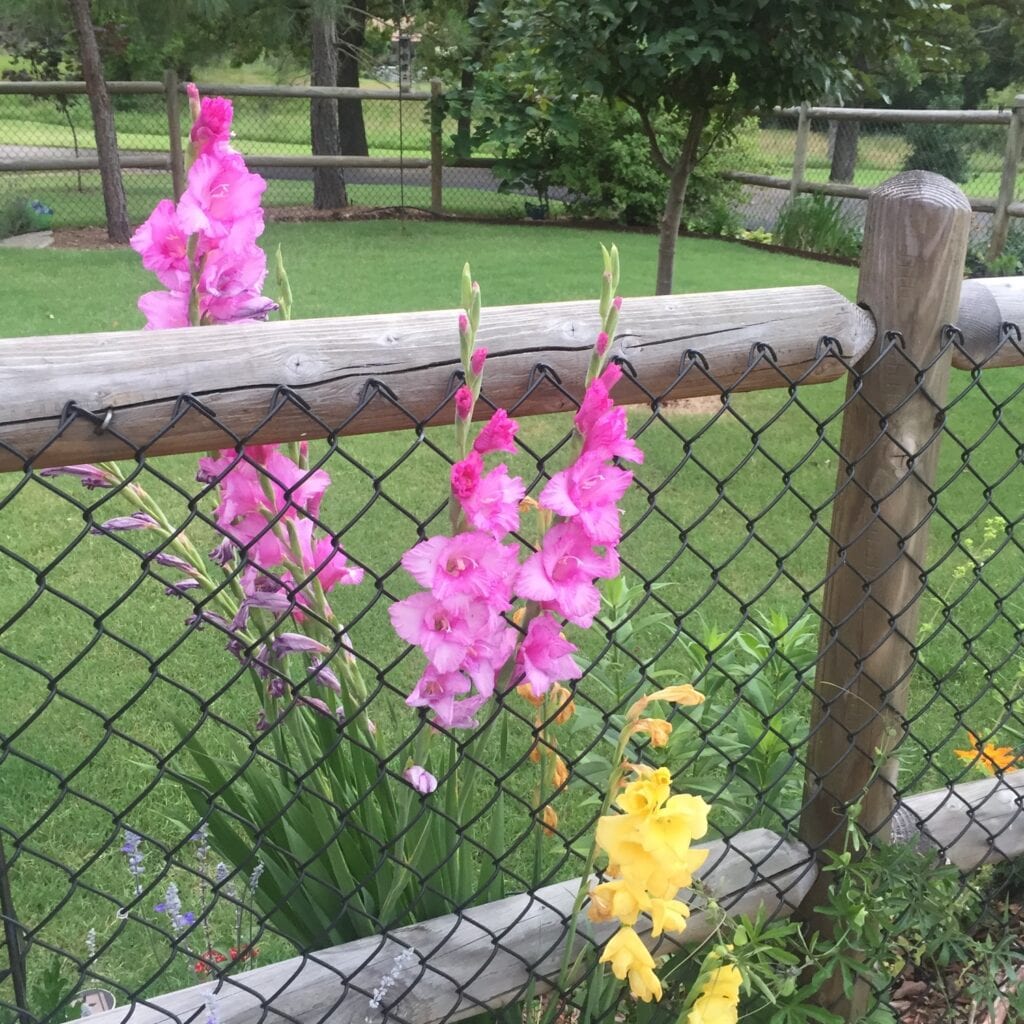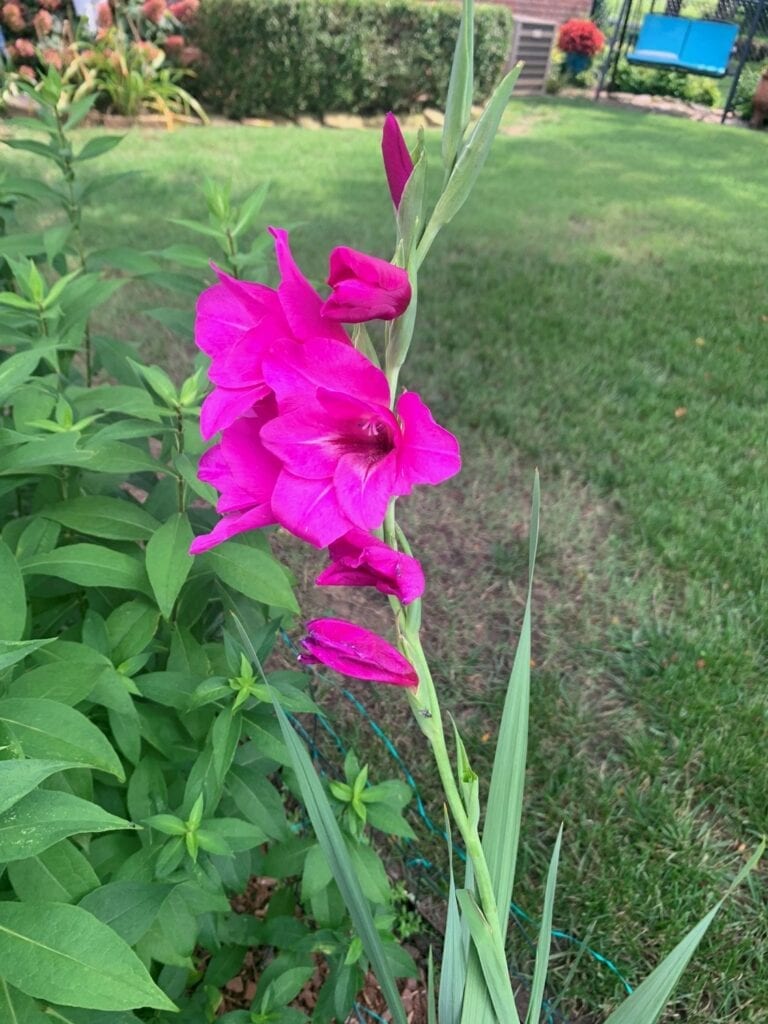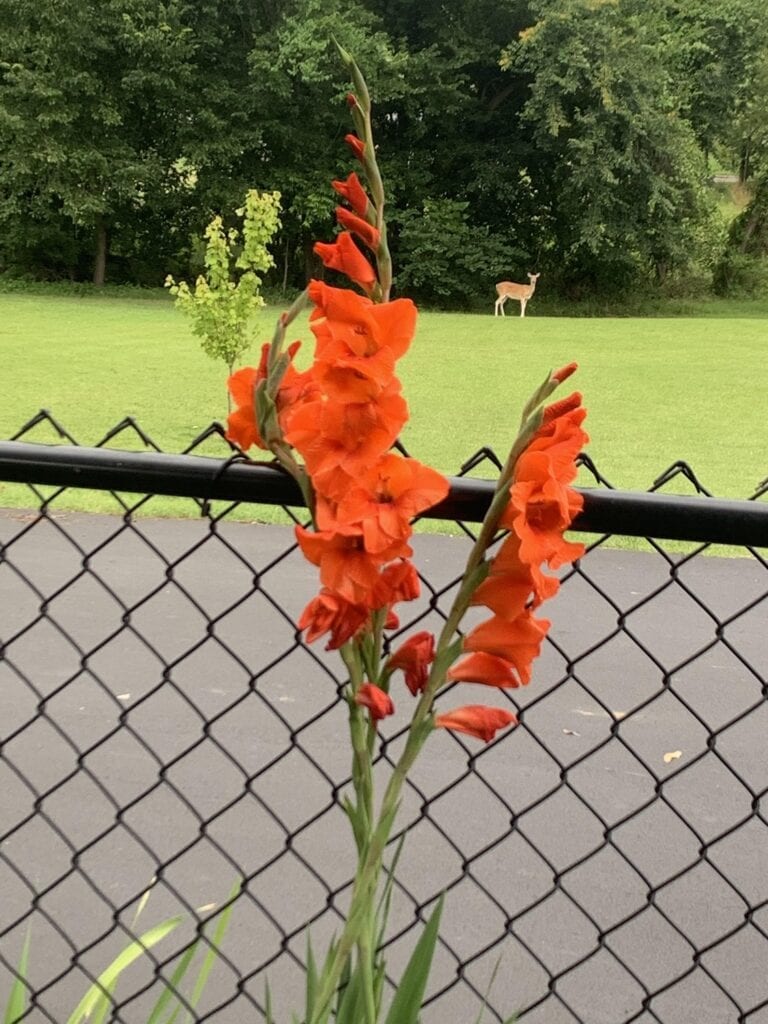Kathy Berryhill
Creek County Master Gardener
Area gardeners welcomed the magnificent blooms of Gladiolus this week! These stunning flowers bloom in a multitude of colors and can grow up to 5’ tall. Gladiolus is a perennial bulbous flowering plant in the Iris family. A hardy plant with large, colorful blooms, this tall striking flower is a favorite of my oldest daughter who celebrates an August birthday. How fun to discover that the Gladiolus is actually recognized as one of the August birthday flowers! In the language of flowers, Gladioli are called “sword lilies” due to their blade-like leaves. Gladiolus comes from the Latin word gladius, meaning “sword.” The stunning Gladiolus flower signifies remembrance and expresses infatuation, telling the receiver that he or she “pierces the heart”.
Our planting region is on the borderline of the growing zone required to maintain Gladioli as a perennial. It was surprising to see that our February cold spell didn’t destroy these beauties. Similar to its relative the Iris, this is one of the easiest plants to grow, requiring little care and providing a tremendous color show each year!
Gladioli are grown from a corm, which resembles a small bulb. Bare corms are sold in spring in packages containing multiple starts. Corms can be planted once the danger of frost has passed and the soil has warmed to at least 55 degrees. They have a preference for a sunny location and like well-drained, moderately fertile soil. As with other plants, they benefit from a 2”- 4” layer of compost or aged manure when planting.

To ensure large blooms, select corms that are at least 1 ¼” in diameter. Place the corm 4”-6” deep with the pointed end up. Utilize a spacing of 6”-8” apart to allow for the size of the plant. If planting multiple corms, plant every 10 days to encourage a longer bloom season. Take care to water the newly planted corms thoroughly at planting and provide adequate water during its growing season. Due to the height of the plant and the weight of the bloom stalk, it is advantageous to place a supporting frame in the ground at planting time. Planting against a fence can also provide needed support.
Provide a good layer of mulch around the Gladioli to help retain moisture and prevent weeds. Soon you will see pointed leaves emerging from the ground, hopefully followed by a flower stalk with multiple buds. The buds will begin to open from the lower part of the bud stalk and continue opening upwards. As old blooms fade, remove them to ensure continuous blooming up the stalk. Once all the flowers are gone, cut the flower stalk off so the plant doesn’t put any energy into the dying stalk. Do not disturb the remaining leaves to allow the plant to mature and grow a corm for the next season. Several weeks after blooming, the leaves will die back. A new corm will grow on top of the old corm that produced the bloom, and the cycle should continue.
My garden has spaces where multiple small Gladiolus’ leaves are growing in a crowded space. Carefully lifting these small corms next fall will allow me to select some of the larger ones, and replant them to encourage blooms next season. As cold weather approaches, take care to cover the ground with adequate mulch to protect the corms from freezing.
Following these steps should provide your garden with magnificent spears of color in your summer garden. Happy Gardening!!












